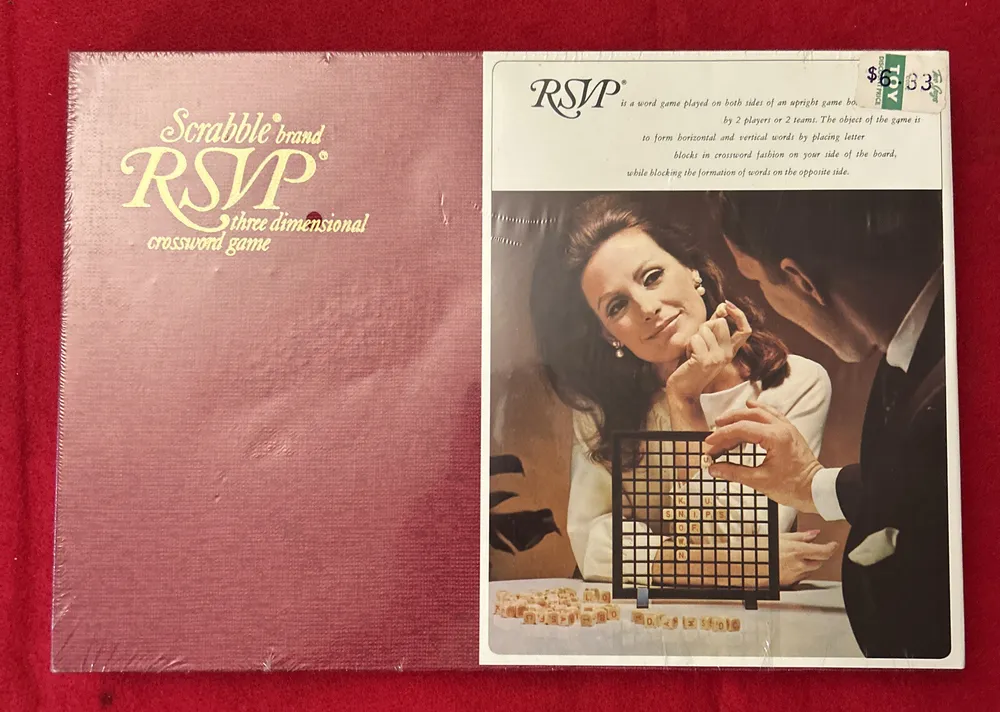RSVP: Vertical Crossword Game (1958)
RSVP
RSVP is a vertical version of Scrabble introduced by Selchow and Righter in 1958 and promoted as “3-D Scrabble”. The game was sold in the UK under the Spear’s Games label and was copyrighted in 1966 by Production and Marketing Company and 1968 by J. W. Spear & Sons Ltd. RSVP is played on both sides of an upright frame by two players, and the object of the game is to form horizontal and vertical words by placing letter blocks in crossword fashion on your side of the frame while blocking the formation of words on the opposite side.
Why is RSVP Popular?
RSVP is a popular game because it offers a unique twist on the classic Scrabble experience by adding a vertical dimension to the gameplay. This change in perspective encourages players to think differently about their word choices and strategies, making the game more challenging and engaging. Additionally, RSVP is a great option for those who enjoy word games and are looking for a fresh take on the traditional Scrabble format.
Game Components of RSVP: Vertical Crossword Game
How To Setup RSVP: Vertical Crossword Game
To set up the game, players need to assemble the upright game board using the plastic supports. Each player will have their side of the board where they will place the wooden letter cubes. The rules provide detailed instructions on how to prepare the board and begin the game.
Gameplay Mechanics and Game Objective
Player Experience
Playing RSVP: Vertical Crossword Game combines strategic thinking with vocabulary skills. Players must think ahead to create words while preventing their opponent from doing the same. The game encourages competition and mental agility, making it engaging for those who enjoy word games and puzzles.
Pros
Cons
Personal Thoughts on RSVP: Vertical Crossword Game
This game is ideal for word game enthusiasts, families, and educational settings. It offers a fun and challenging way to improve vocabulary and strategic thinking. The unique 3D setup and competitive element make it a compelling addition to any board game collection. However, it may not be the best fit for those seeking games with larger player capacities.
We are supported by our audience. When you purchase through links on our site, we may earn an affiliate commission, at no extra cost for you. Learn more.

